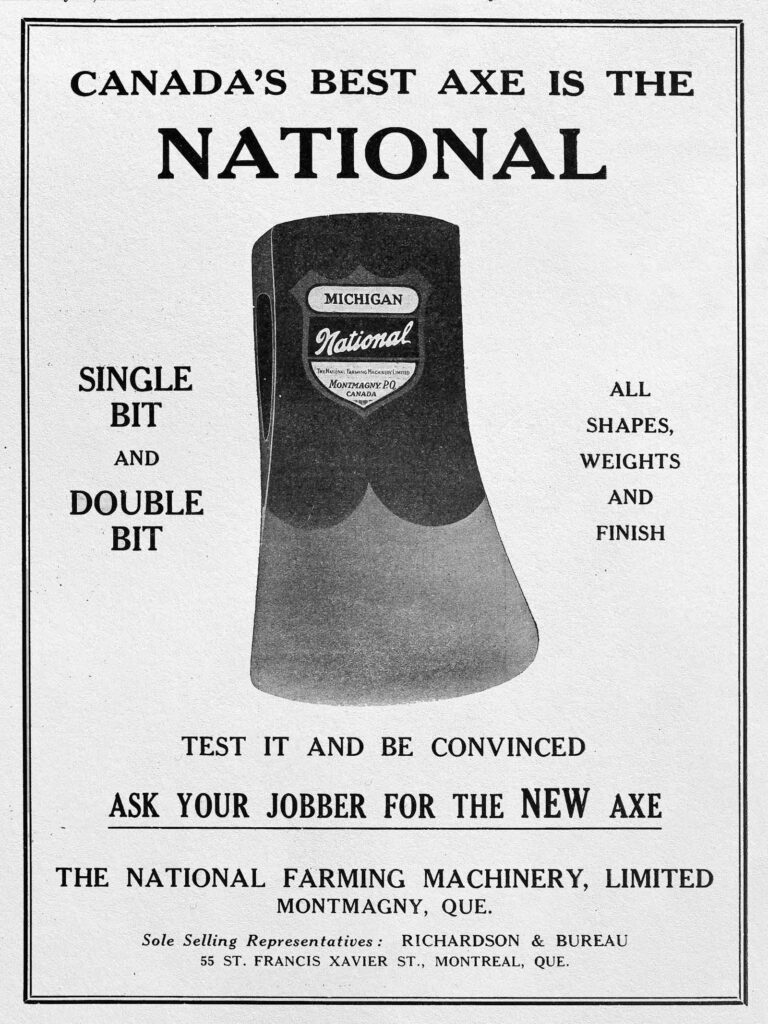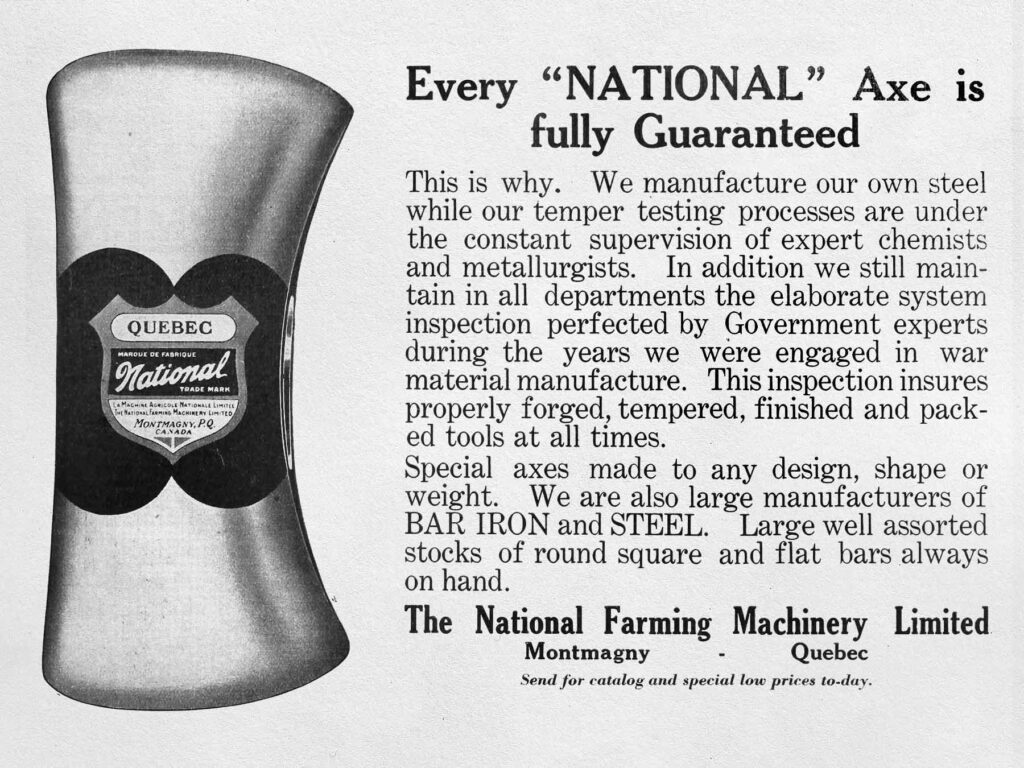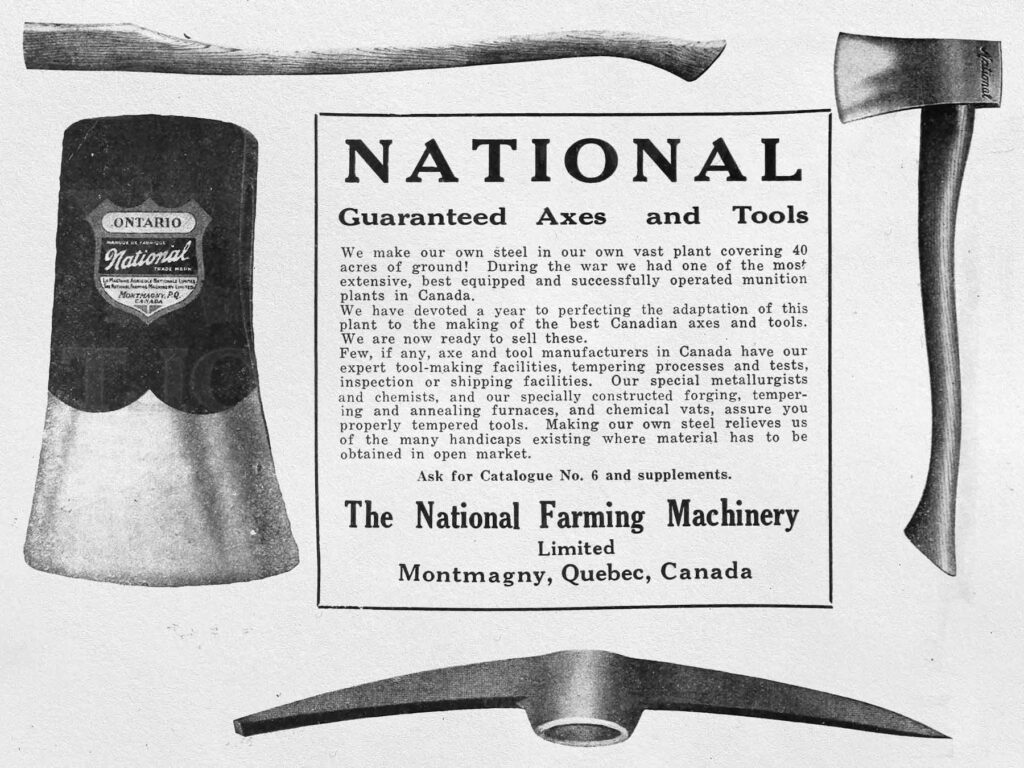The Short-Lived Canadian National Axe
1920-1922
Montmagny, Quebec
This was a large incredibly short-lived Canadian axe maker.
The “National” axe was briefly produced by The National Farming Machinery Limited (La Machine Agricole National Limitee). This large ambitious company had grown rapidly out of a boom producing munitions during the First World War.
After the war the company pivoted to focus on agricultural equipment, including large machinery like steam and gasoline engines. The axe business was only a part of the operation, but the company’s ability to produce its own steel set it apart from the competition.
However, after a fire, they had spent a great deal of money to modernize and expand to support the war effort but were stuck trying to support their enormous size (and debt) once the war ended and government contracts ended.
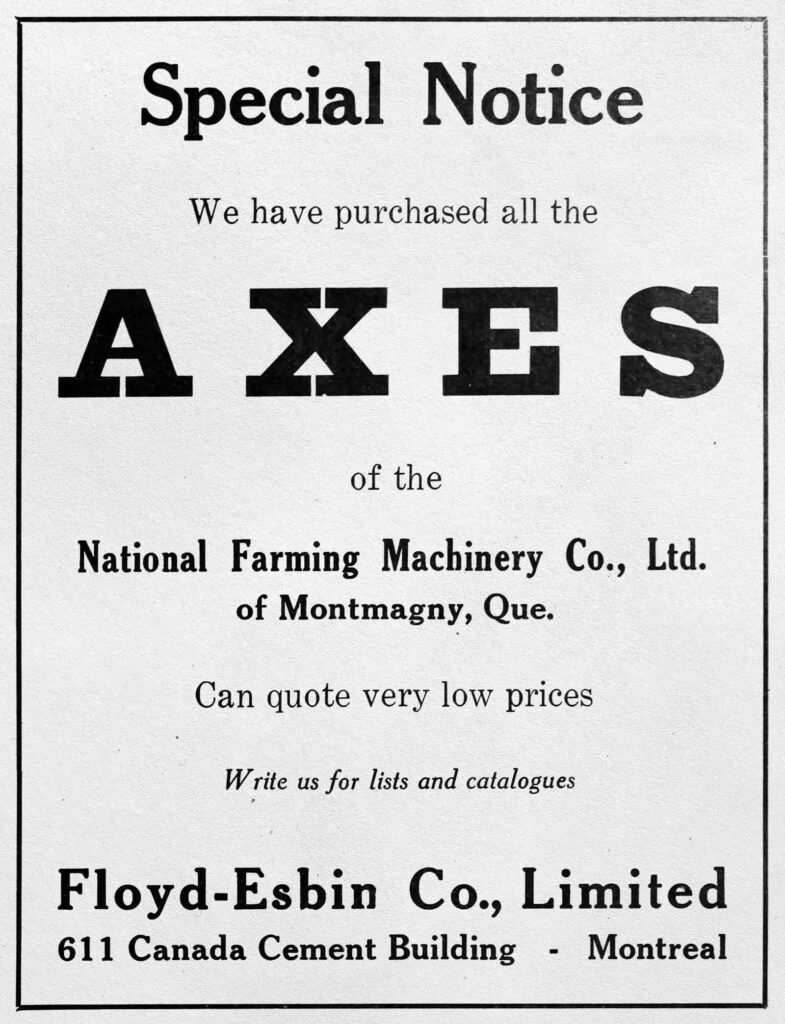
An economic downturn in the agriculture industry sealed the company’s fate and it shuttered in November of 1922.
The remaining axes were bought by a local hardware business when the company liquidated, and sold at a discount in early 1923.
History of The National Farming Machinery LTD.
The National Farming Machinery Limited was the final act of constantly changing and merging businesses starting in Montmagny, Quebec in 1893.
Local Roots in Montmagny
In 1893, Arthur Napoléon Normand (a local of Montmagny) started a small company called Montmagny Machine Works that made machines for sawing wood and threshing grain.
In 1902, the company evolved and the Compagnie manufacturière de Montmagny was founded with eight other partners. They made machinery and equipment, including steam and gasoline engines. The factory was destroyed by fire twice, but Normand and his team kept going.
At the same time (1902) in Quebec City, Charles Abraham Paquet and four partners started the Compagnie Charles A. Paquet which sold machinery and hardware.
A Partnership and Merger
In 1909 (following the adoption of the “Good Roads Act”) the two companies partnered to pool their skills and interests in order to design, manufacture and market a range of tools and machinery dedicated to road maintenance.
The companies eventually merged in 1912 to form Usines Générales de Chars et de Machineries Limitée.
The new company had big plans, including making vehicles, producing electricity, and dealing in real estate. The city of Montmagny gave them tax exemptions and a bonus, and their factories grew quickly. By 1913, they had 140 workers and a lot more space.
Production during WW1
During World War I, the company won government contracts to make shells for the war effort. But in 1916, a fire destroyed one of the two factories. To pay for the rebuild and modernization, he got a loan of $2 million from a bank. However, his company still had problems finishing the work and he got into arguments with the bank about his salary and withdrawing money.
Despite this, his company managed to reduce its debt in 1918. At that time, it had a record number of employees: 1,050.
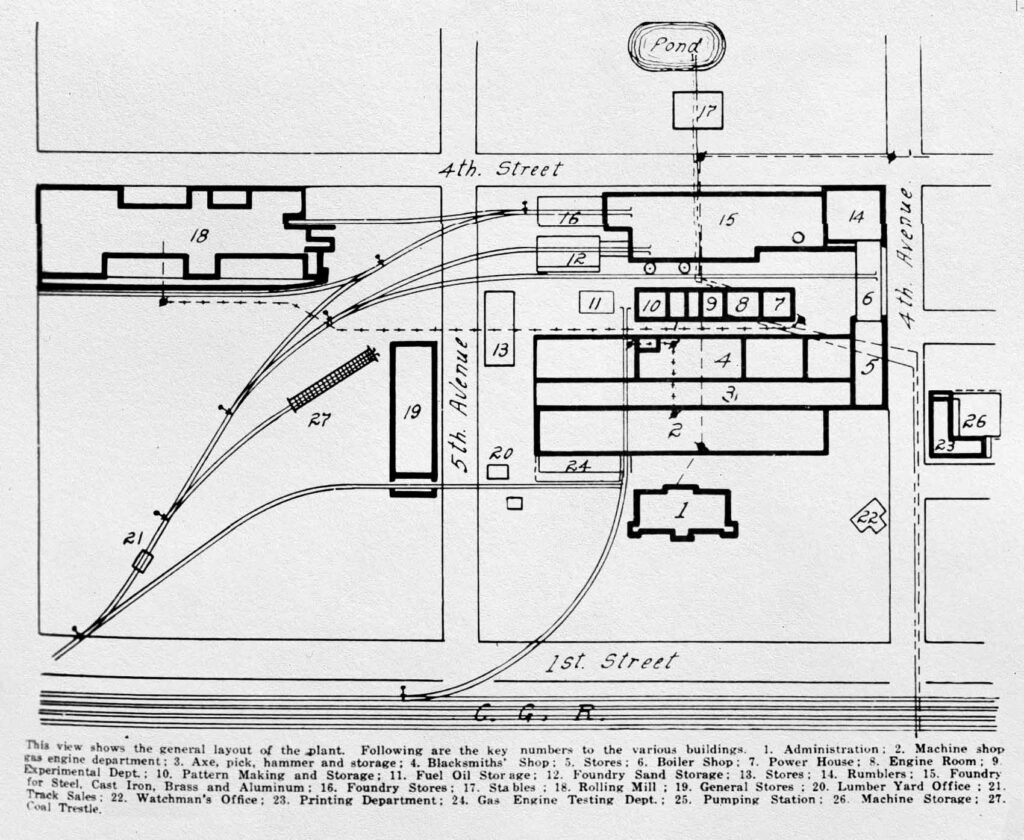
Incorporation for Peacetime
After the war, the company reorganized to focus on agriculture, and on Sept 15, 1919, The National Farming Machinery Limited was incorporated. They produced a wide range of complex (and simple) agriculture tools and machinery including tractors, steam engines, and field equipment.
Despite its promising start, an economic crisis in the agricultural sector and the end of military government contracts led to heavy financial losses. To recover, the company issued bonds and obtained credit from Banque Nationale.
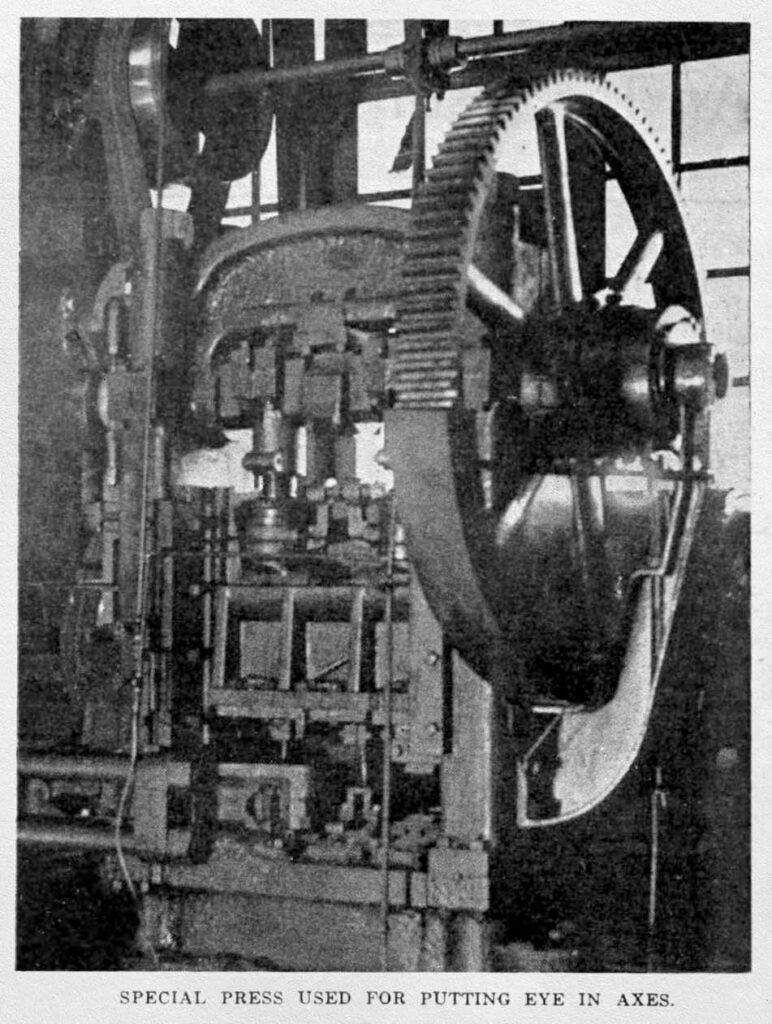
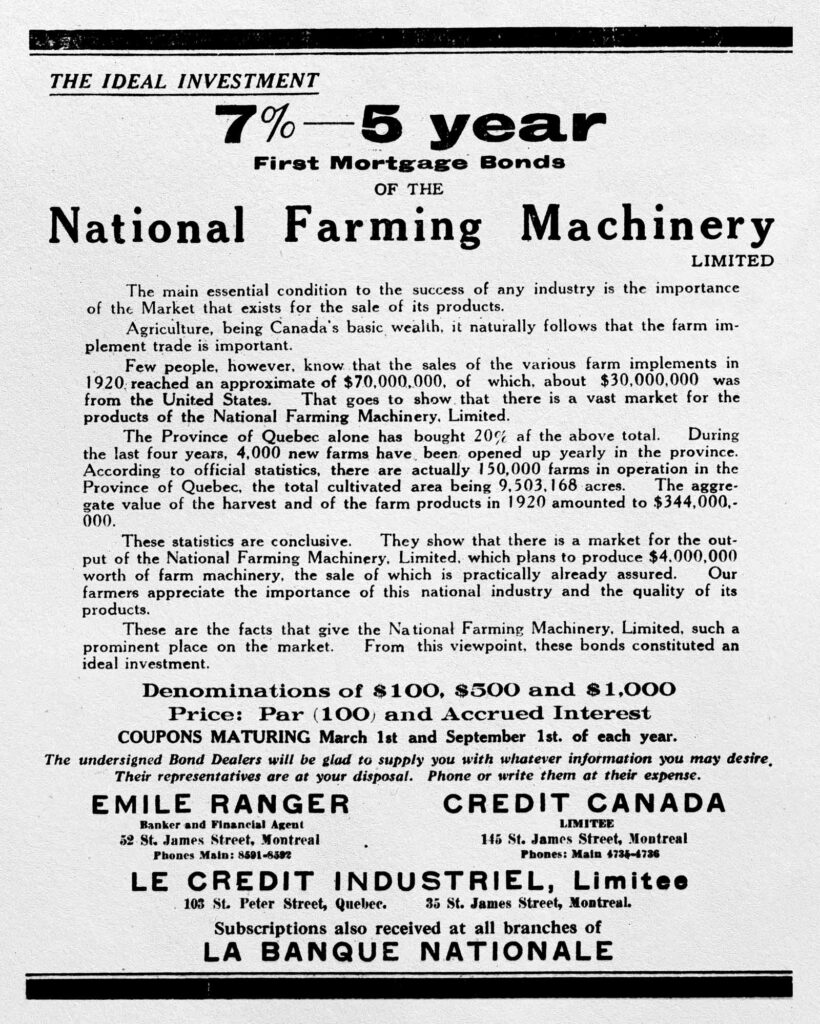
It was not an “Ideal investment”
A Quick Collapse
However, these efforts were not enough, and by the end of 1921 the company apparently owed the bank between $3.8 million and $4.5 million (equivalent to $55-65 million today when adjusted for inflation)
in February 1922, Paquet was forced to shut down his factories. National Farming Machinery Limited eventually went bankrupt on November 18 of the same year.
Help the site grow!
Did I get something wrong? Do you have one of these axes? Please share any pictures, information, or insights to help fill the archive. You can email: museum@axeandtool.com
Sources
- Hardware & Metal, January 1921
- Biography.ca – Paquet, Charles-Abraham
- Canada Lumberman 1922
- Ingenium – La Machine Agricole Nationale Limitée of Montmagny, Québec
- La Société d’histoire de Montmagny
- The Financial Times, Saturday May 21, 1921
- Canadian Machinery & Manufacturing News – Jan 6, 1921

